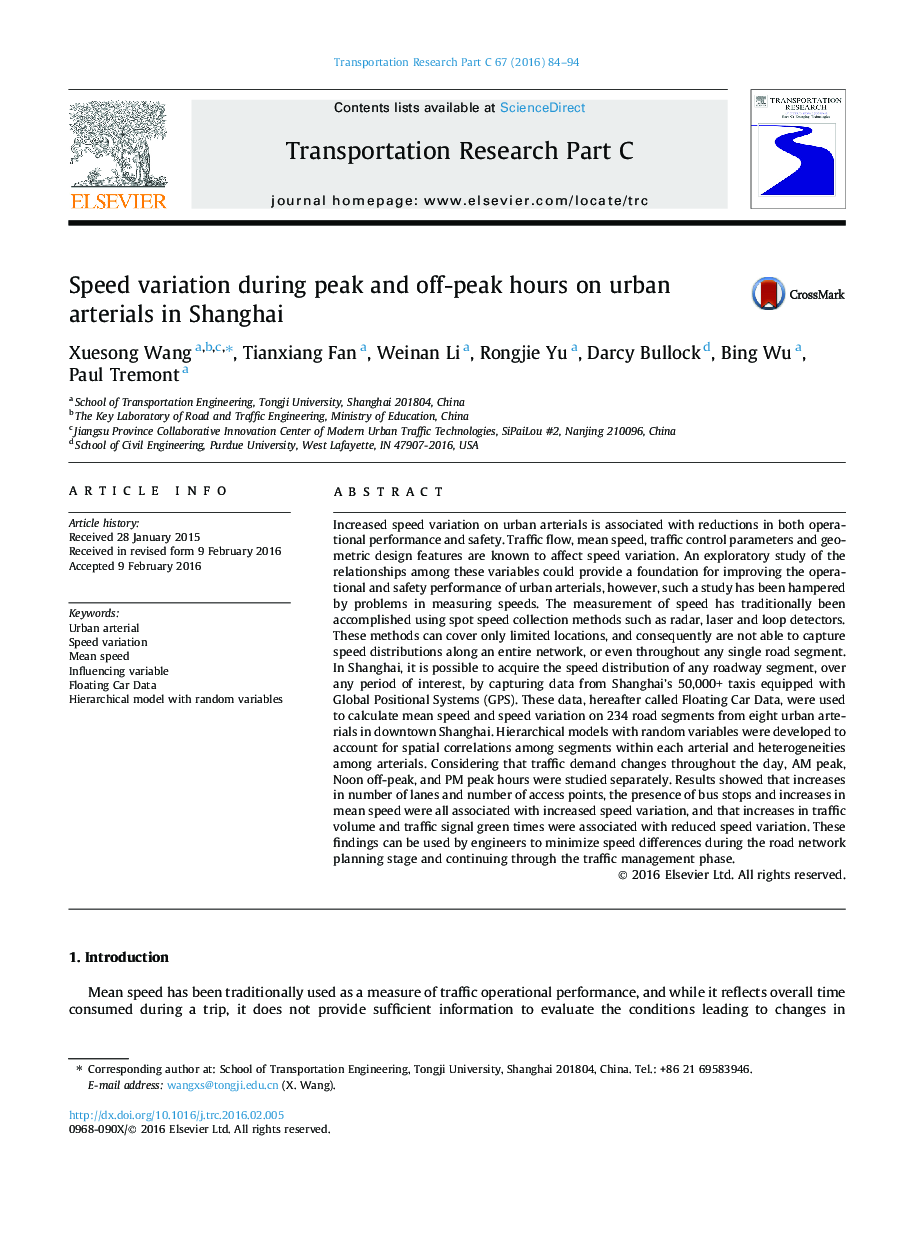| Article ID | Journal | Published Year | Pages | File Type |
|---|---|---|---|---|
| 6936383 | Transportation Research Part C: Emerging Technologies | 2016 | 11 Pages |
Abstract
Increased speed variation on urban arterials is associated with reductions in both operational performance and safety. Traffic flow, mean speed, traffic control parameters and geometric design features are known to affect speed variation. An exploratory study of the relationships among these variables could provide a foundation for improving the operational and safety performance of urban arterials, however, such a study has been hampered by problems in measuring speeds. The measurement of speed has traditionally been accomplished using spot speed collection methods such as radar, laser and loop detectors. These methods can cover only limited locations, and consequently are not able to capture speed distributions along an entire network, or even throughout any single road segment. In Shanghai, it is possible to acquire the speed distribution of any roadway segment, over any period of interest, by capturing data from Shanghai's 50,000+ taxis equipped with Global Positional Systems (GPS). These data, hereafter called Floating Car Data, were used to calculate mean speed and speed variation on 234 road segments from eight urban arterials in downtown Shanghai. Hierarchical models with random variables were developed to account for spatial correlations among segments within each arterial and heterogeneities among arterials. Considering that traffic demand changes throughout the day, AM peak, Noon off-peak, and PM peak hours were studied separately. Results showed that increases in number of lanes and number of access points, the presence of bus stops and increases in mean speed were all associated with increased speed variation, and that increases in traffic volume and traffic signal green times were associated with reduced speed variation. These findings can be used by engineers to minimize speed differences during the road network planning stage and continuing through the traffic management phase.
Related Topics
Physical Sciences and Engineering
Computer Science
Computer Science Applications
Authors
Xuesong Wang, Tianxiang Fan, Weinan Li, Rongjie Yu, Darcy Bullock, Bing Wu, Paul Tremont,
